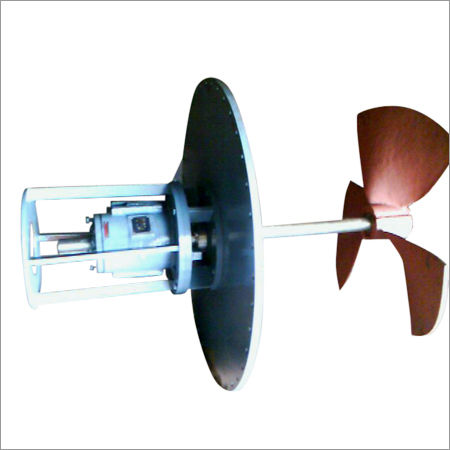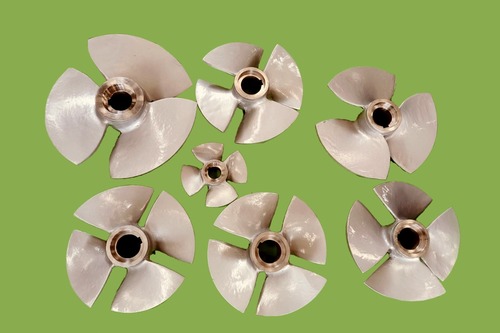Casing of Axial Flow Pump
Product Details:
- Discharge Pressure Up to 5 bar
- Max Suction 6 m
- Noise Level Below 75 db
- Caliber 200 mm
- Frequency 50/60 Hertz (HZ)
- Working Temperature -10 to 120 Celsius (oC)
- Head Size Up to 15 m
- Click to View more
Casing of Axial Flow Pump Price And Quantity
- 50000 INR/Piece
- 100 Piece
Casing of Axial Flow Pump Product Specifications
- Sky Blue
- Stainless Steel
- Manual/Automatic
- Axial Flow Pump
- Mechanical Seal
- Up to 15 m
- Single Casing
- -10 to 120 Celsius (oC)
- Fabricated Axial Flow Pump
- 980-2900 RPM
- 200 mm
- Axial Flow
- Corrosion Resistance, High Flow, Robust Construction
- Other
- Horizontal / Vertical
- 200 mm
- Up to 5000 m/h
- 6 m
- 5000 m3/hr
- Self-priming
- Up to 5 bar
- Axial Suction
- IS 9283
- 200 mm
- 50/60 Hertz (HZ)
- Below 75 db
- Up to 5 bar
- Other
- 100 Kilograms (kg)
Casing of Axial Flow Pump Trade Information
- Cheque
- 1-10 Piece Per Week
- 8-10 Week
- All India
Product Description
Axial flow pumps are used to move large volumes of fluidwith relatively low head, typically in applications like irrigation, drainage,and circulating water in power plants. The design of an axial flow pump casingis crucial for efficient operation, as it guides the flow of fluid through thepump with minimal losses.
Key Considerations in Axial Flow Pump Casing Design:
Casing Shape:
The casing of an axial flow pump is typically cylindrical orconical to match the streamline flow of fluid and minimize turbulence.
The inner surface of the casing is smooth to reduce frictionand prevent flow separation.
Impeller Clearance:
The clearance between the impeller and the casing must beminimized to reduce leakage losses.
However, sufficient clearance must be maintained to preventthe impeller from contacting the casing under operating conditions, which couldcause damage.
Materials:
The casing material must be chosen based on the nature ofthe fluid being pumped (e.g., corrosive, abrasive).
Common materials include stainless steel, cast iron, andsometimes special alloys for more demanding applications.
Structural Integrity:
The casing must withstand the operating pressures and anypotential external loads without deformation.
Reinforcements may be added to the casing in high-stressareas to maintain structural integrity.
Mounting andAssembly:
The casing design must consider ease of assembly andmaintenance. This includes accessibility to the impeller and other internalcomponents for inspection and repair.
Inlet and Outlet Configuration:
The inlet (suction) and outlet (discharge) ports must bedesigned to match the fluid dynamics requirements of the system.
These ports are usually flanged to allow easy connection tothe piping system.
Seal Design:
The casing design must include provisions for sealingmechanisms to prevent leakage where the shaft passes through the casing.
Cooling Provisions:
In some cases, the casing may need to include coolingjackets or other provisions to manage the temperature of the pump, especiallyin high-power applications.
Design Process:
Hydraulic Design:
Begins with the determining the flow rate, head, andefficiency requirements. Computational fluid dynamics (CFD) simulations can beused to optimize the casing shape.
Structural Design:
Finite element analysis (FEA) is often used to ensure thecasing can handle the operating pressures and stresses without excessivedeformation or failure.
Prototyping andTesting:
A prototype casing is usually built and tested underoperating conditions to validate the design.
Iteration:
Based on test results, the design may be refined to addressany performance issues or to optimize the efficiency.
Designing the casing for an axial flow pump is a balancebetween hydraulic efficiency and mechanical robustness. The casing must supportthe pumps intended function while being cost-effective to manufacture andmaintain.
Hydrodynamic Design and Construction
Optimized through hydrodynamic principles, the single casing structure ensures efficient water flow and reduced turbulence. The robust stainless steel material combined with powder coating offers longevity, reliability, and resistance against corrosion, making it ideal for challenging environments.
Ease of Installation and Maintenance
Featuring flanged connections and onsite assembly, installation is straightforward and hassle-free. This pump casing is engineered for minimal maintenance and easy access, allowing routine servicing or inspection without extensive downtime or specialized tools.
Versatile Application and Operation
Suitable for a wide array of uses, including water and wastewater management, irrigation, and flood water removal, the axial flow pump casing delivers high flow rates and performs efficiently across varied operational situations. Its self-priming capability and mechanical seal ensure consistent and leak-free performance.
FAQs of Casing of Axial Flow Pump:
Q: How is the axial flow pump casing installed onsite?
A: The pump casing is designed for onsite assembly, utilizing flanged connections for straightforward integration into existing piping systems. Horizontal or vertical mounting options allow for flexible installation suited to specific site requirements.Q: What are the benefits of the hydrodynamic optimized design?
A: The hydrodynamic design reduces turbulence, enhances flow efficiency, and minimizes energy losses. This results in higher overall performance, lower operating costs, and reliable, efficient water movement across demanding applications.Q: When should maintenance be performed on this pump casing?
A: Thanks to its minimal maintenance design, regular inspections can be carried out during scheduled plant servicing. Its easy-access structure ensures quick checks or seal replacement without significant operational interruptions.Q: Where can the axial flow pump casing be used?
A: This casing is suitable for installations in water and wastewater treatment plants, agricultural irrigation systems, flood control projects, and industrial circulation or drainage setups. Its robust construction allows use in both indoor and outdoor environments.Q: What is the recommended process for connecting this casing to the system?
A: Attach the casing using the flanged connections, ensuring correct alignment and secure fastening according to IS 9283 standards. Verify gasket placement and inspect seals to prevent leaks. Complete assembly should follow manufacturer guidelines and local safety codes.Q: How does the pump casings surface finish contribute to its durability?
A: The powder-coated finish provides enhanced surface protection against corrosion, abrasion, and environmental stress. It extends the lifespan of the stainless steel structure, even under fluctuating temperature and moisture conditions.Q: What advantages does self-priming offer in this pump casing?
A: Self-priming functionality enables the pump to automatically evacuate air from the suction line, allowing it to begin operation without manual priming. This feature reduces startup time, simplifies operation, and improves overall system reliability.
Price:
- 50
- 100
- 200
- 250
- 500
- 1000+












